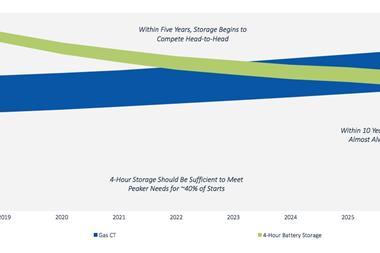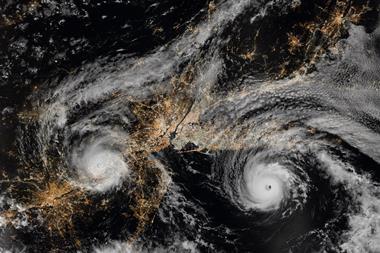Renewable energy projects are experiencing unprecedented growth. Andrew Norris, senior engineering underwriter at Swiss Re Corporate Solutions, tells of the opportunities, the risks and how the industry is responding

When clean energy first made headway in the global marketplace, the momentum was initially driven by environmental arguments: a response to driving down global pollution and carbon emissions; and an answer to the unsustainable use of fossil fuel, as the world’s population continues to grow into the billions.
Governments were the biggest advocates: introducing various tax breaks on the use of renewables and offering attractive subsidies to increase competition against fossil fuels and nuclear power. Growth was slow, however. The sheer cost of getting renewables onto the grid was a challenge, inviting numerous questions about the scalability and stability of renewable energies.
In recent years, there has been a considerable shift and the ‘cost handicap’ no longer exists. In fact, the market is set to grow at an unprecedented rate – renewable power capacity built worldwide will account for more than $2trn in total investment by 2030 and 75% of this, or 900gigwatts, will be in solar and wind sectors, both onshore and offshore.
Economy of scale
These two technologies can now make their own case, purely on an economic basis. The cost of manufacturing solar panels has plummeted at an incredible rate, partly due to Chinese manufacturing. Offshore wind turbines have become bigger and have achieved large economies of scale. There are now several new offshore wind projects that have not been supplemented by government subsidy but financed privately on the merits of the technology and its more viable costs. In the eyes of some developers, offshore wind has achieved parity with fossil energy.
With these economies of scale, countries worldwide, from the EMEA region right through to Asia-Pacific, are investing heavily. But the opportunities are not without risks.
The top risks
Physical damage to renewable energy technologies is perhaps one of the biggest and potentially costliest risk, and can be exacerbated by the following:
- Collapses: On hydro schemes, unforeseen ground conditions can place tunnelling systems and dams at threat of collapse. When working underground, construction workers could go through an area of heavily vaulted ground with high levels of water, which can trigger collapses. This will often occur during the construction phase. Once a tunnel or dam has been built, lined with concrete and declared fit for purpose, the likelihood of collapse is reduced.
- Grid connections: renewable energy projects are often built on remote and hard-to-reach locations, such as mountainous areas. This makes connecting renewable-generated electricity to the town or city for which it is intended extremely challenging. Many renewable energy sites utilise power lines to connect renewable-generated electricity to the grid or transmission system, but these are vulnerable to adverse weather events, causing damage to the cable, particularly if they are not erected properly.
- Weather risks: Solar panels and turbines are vulnerable to adverse weather, such as hailstones, which can cause costly damage to the technology.
- Maintenance: poor maintenance could lead to physical damage. Crustacea and rust can attach itself to hard-to-reach areas of turbine blades. And if not adequately addressed, can cause the turbine to malfunction and breakdown.
Insurance is a business enabler
There is a plethora of insurance solutions that provide coverage for these types of physical damage – which we at Swiss Re Corporate Solutions offer. But for us, insurance is more than a risk transfer mechanism. It is a business enabler. As renewable energy installations grow globally, and as these technologies develop in sophistication and complexity, finding the right solution that can help get projects off the ground can be ever more challenging.
A good case in point involves a UK onshore biomass energy project. The project owners had a unique arrangement with the government: they had to demonstrate that they generated a certain amount of renewable energy by a particular trigger date. If they achieved this goal, they would be awarded a renewable obligation certificate (so-called ROCs), at a beneficial rate for every megawatt hour of power produced. And if they failed, they would gain no ROCs.
The financing of the project was in the balance. And as with many renewable energy projects, it was vulnerable to some of the physical damage exposures mentioned earlier. So, we created a ‘step-down’ insurance, where if through some fortuitous event, a fire or explosion, caused a delay to the project, we would provide a high percentage of the lost subsidy. This gave the project owners a lot more confidence to proceed with the project – and they met their trigger date. By working collaboratively with clients, we can develop bespoke solutions that meet their evolving needs.
Andrew Norris, senior engineering underwriter at Swiss Re Corporate Solutions





















No comments yet